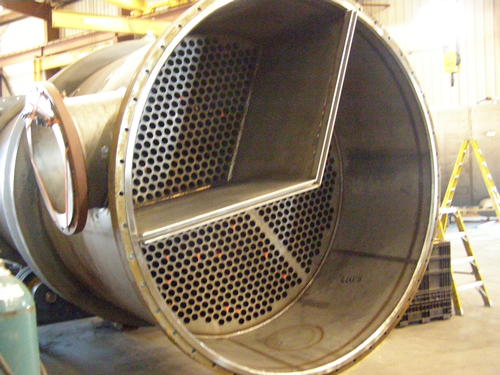
Heat Exchanger Design & Detailing
Welcome to 3D Labs, your premier destination for Heat Exchanger Design services. We specialize in providing innovative and efficient solutions for your heat transfer challenges. Our expert team of engineers is committed to delivering top-notch designs that optimize performance, reduce energy consumption, and enhance overall system efficiency.
Why Choose Our Heat Exchanger Design Services?
Engineering Excellence: Our team consists of highly skilled engineers with extensive experience in heat exchanger design, ensuring reliable and effective solutions.
Tailored Designs: We understand that each heat transfer application is unique. Our designs are customized to suit your specific requirements, maximizing efficiency.
Cutting-edge Technology: Utilizing state-of-the-art software and simulation tools, we deliver precise and accurate analyses for optimal design outcomes.
Performance Optimization: Our focus is not only on meeting specifications but also on achieving enhanced performance and cost-effectiveness.
Energy Efficiency: We prioritize energy-efficient solutions to help you reduce operational costs and minimize environmental impact.
Our Heat Exchanger Design Process:
Needs Assessment: We begin by understanding your heat transfer requirements, system parameters, and performance expectations.
Conceptual Design: Our engineers develop conceptual designs, considering factors such as flow rates, materials, and thermal characteristics.
Detailed Analysis: Rigorous simulations and analyses are performed to evaluate the proposed designs and identify potential improvements.
Prototyping (If Required): For complex projects, we may create prototypes to validate the design before final implementation.
Final Design: The approved design is refined, and detailed documentation is provided to facilitate manufacturing and installation.
Industries We Serve:
Our heat exchanger design expertise caters to a diverse range of industries, including:
Petrochemical
Power Generation
HVAC & Refrigeration
Oil & Gas
Food & Beverage
Pharmaceutical
Chemical Processing
And more.
Partner with 3D Labs for innovative and reliable Heat Exchanger Design services that optimize thermal performance and ensure long-term efficiency. Contact us today to discuss your project requirements and embark on a journey towards enhanced heat transfer solutions.
heating coil design
Tailored Solutions
Types of Heat Exchangers
Types of Heat Exchangers
Based on the design characteristics indicated above, there are several different variants of heat exchangers available. Some of the more common variants employed throughout industry include:
heat exchanger calculation spreadsheet download
heat exchanger pdf free download
heat exchanger pdf free download
download heat exchanger design calculations
